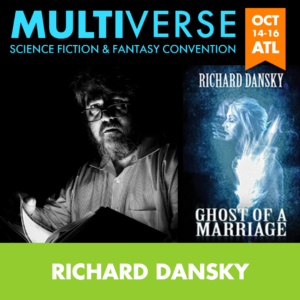My old White Wolf running mate Ian Lemke is Kickstarting a tabletop RPG of American Gothic Horror called Nevermore. You can find the details here. And among those details is a stretch goal whereby yours truly will be writing some short fiction for the game. So if you’re a role-player and love horror, check it out!
Firefly Rain News
Once upon a time, I published a novel called Firefly Rain. It was my first original novel – I’d published four previously as tie-ins to a couple of White Wolf games – and I was and am very proud of it. It came out as the lead title for the short-lived Discoveries line from Wizards of the Coast, and garnered some good reviews, most notably a starred review in Publishers’ Weekly and a Booksense pick. It even sold reasonably well, but Wizards shut down Discoveries before we could do a paperback edition. Gallery Books was kind enough to pick up the rights for a paperback edition, and that was that.
Until now.
As of today, I have the rights to Firefly Rain back. With luck, that means I’ll be doing something with those rights and putting out a new edition. I don’t have a timetable, but for the first time in a long time, it feels like things are moving in a good direction.
Like I said, I’m proud of the book. It’s a personal story about the promises one makes to family and the price of not keeping those promises. If you’re looking for blood and guts, you’re not going to find them here, but if you want a slow-burn ghost story, you might enjoy it. The book was inspired by a trip to my ex-wife’s family farm and a moonlight walk, where the line of shadow at the property line was sharp enough to cut with. From there I got the image of a farm bereft of fireflies when all the land around was lit up, and that turned into the novel.
So wish me luck. I’ll keep you posted.
Five For Writing – Fred Wan
There are rules lawyers, and then there’s Fred Wan, who wears two hats as a talented game writer and as an actual lawyer. A core part of the storytelling team for Legend of the Five Rings over many years, he brings his wit, wisdom, and charm to Five for Writing
 1-What’s the overlap between your day job and your writing?
1-What’s the overlap between your day job and your writing?
There is simultaneously a lot of overlap, and no overlap at all, between legal writing and gaming/fiction writing.
The big point where the two don’t overlap at all is that real life doesn’t try to create a narrative—we as people do. A case might have evidence missing, odd events that don’t match the overall pattern of behavior, or a weird hodgepodge of facts that defy being summarized in a just a few lines. Additionally, in fiction, I can create facts to fill my design and narrative objective—whereas in real life, I have to work with the evidentiary
record that’s on hand.
But having said that, a lot of techniques and frameworks translate between both disciplines. The idea that each component in a piece of work needs to both stand alone and contribute to the themes of the work as a whole rings true in all my writing. Ultimately, effective communication requires me to know what messages I want readers
to take away from my work. The choice of what I passages and images to put in to my writing—be it a legal document, short story, character dialogue bark, or set of tabletop rules–needs to be informed by what I want to emphasize and what I want a reader to take away.
2-You were part of the story team for Legend of the Five Rings for an impressively long time. How did that collaboration work?
A lot of my L5R work required me to be in tune with what various stakeholders were doing, what they wanted, and how they were doing it. I was the liaison between the Brand team, the CCG Design Team, the RPG Design team, the Story team proper, and the playerbase as a whole—because of the unique nature of L5R as a brand, the
players were active stakeholders in how the games and universe developed. Each had different objectives, and each had different tools and techniques to accomplish those objectives.
Collaborating in that environment meant listening to each, understanding what they wanted, then translating that into terms and concepts that other stakeholders could understand and implement. L5R—like any multidisciplinary or multi-stakeholder setting—needs people who are functionally multilingual.
3-Your work has crossed over between CCG and TTRPG releases. How do you balance the two?
In general, my philosophy was that both product lines described the same universe using different languages. So the issue wasn’t “balancing” them per se, but trying to make sure that the same characters, factions, and conflicts were narratively consistent even though they were being described in two different games. The equilibrium point
wasn’t trading one off against the other, but trying to make the concepts and stories be mutually supportive.
Where conflict or inconsistent portrayals were unavoidable, I tried to have the CCG and TTRPG point at specific geographic locations or time eras that were different—“this is true of THIS part of the Empire, covered by this expansion in the CCG, but might not be true of THAT part of the Empire, covered by this TTRPG supplement”. However, there was also an element of players each having their own takes on what the themes of in-game Clans or the setting as a whole should be, and that different players wanted different things from the brand, and different proportional influence from the CCG and TTRPG. My team and I often asked ourselves “ok, we can’t fully satisfy everyone, but can we satisfy most or all reasonable requests?”. I’d like to think we managed to do that most of the time, if never perfectly.
4-What says good tabletop RPG writing to you?
I’m of the view that in a good TTRPG game session, the players and GM collectively and corroboratively tell a story. The details, tone, and flow of that story should be responsive to what they all want. A TTRPG is ultimately a game where everyone involved is responsible for making the session welcoming, fun, entertaining, and
hopefully thought provoking for all participants.
Good TTRPG facilitates that. The narrative portions should help the group determine what kinds of stories the setting is best placed to tell. The rules should support the feel of the universe it is set in. Ideally, the game even helps explain how the rules help tell the story, and why*.
Ultimately, a TTRPG ruleset is a set of tools. Great tools help the playgroup accomplish what they want to do, efficiently and cleanly. Different playgroups want different things. Good TTRPG writing knows who it’s target audience is, and fulfills their needs. Ideally, they also say something about us, and our relationships with each other and the world.
*For example, the Hit Point system in D&D implies that even a badly wounded, tired PC can still function at full ability. That implies that D&D is more high fantasy, more heroic, than a system where someone who is badly hurt performs worse.
5-Where do you think the form (TTRPG) is going from here?
I think we’re going to be seeing much more meta-examination of the norms and assumptions that were baked into early RPGs. Implicit norms, such as bioessentialism, are currently the topic of discussion by many designers. We’ve got a generation of players and devs who grew up with games, have high game literacy, and are fluent in the languages of the various major settings and rulesets on the market. Now we’re seeing people look at TTRPGs critically, not just to point out what’s bad, but to identify what could be better—and many of them are rightly demanding those changes.
That process of improvement is not without its own flaws, because changes often have problems of their own, but I genuinely believe that we’re working towards TTRPGs with narrative content that is more consciously written to facilitate storytelling AND avoid accidental problematic aspects, and rulesets that are no more complicated than
necessary, and elegant.
I’m kind of looking forward to what’s coming, and getting used to being surprised.
Five For Writing – Matt Forbeck
It’s GenCon week, which makes it the perfect time to talk to the legendary Matt Forbeck. A game designer, best-selling author and all-around nice guy, Matt has untold credits to his name. Here, without delay, is his Five For Writing:
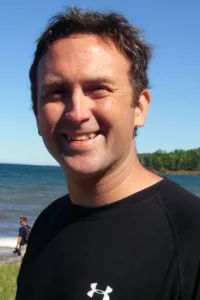 1-What’s it like to have written literally all the things?
1-What’s it like to have written literally all the things?
I find that I haven’t quite written all the things, but the things that I haven’t written get harder to reach. I like to write in all sorts of genres and categories, mostly because it keeps me from getting bored and stale with any particular one, and that (hopefully) keeps my writing fresh and fun — at least to me!
It’s also part of a diversification strategy. If the work or audience for one particular kind of writing dries up, I have others I can tackle instead. It keeps me from having to worry too much more than normal about how I’m going to help feed my kids and <ahem> help put them through college.
2-You’ve written for TTRPG, video games, novels and more. What’s your favorite form, and why?
I like writing in all kinds of formats, and I’d hate to have to actually choose among them. They each have their own strengths. With video games, I get to work with (sometimes massive) teams and watch other folks bring my words to life, but I don’t have much control if any over the final product. With a novel, I get total control over everything, but I don’t get to rely on anyone else’s talents but my own.
Comics and tabletop games make a good balance between those two extremes. I get to work with a small team, and a lot of my vision shows up on the page. Tabletop games can get really complex, though, and require more skills than just writing, which lets me work other parts of my brain. Comics have some of the most stringent parameters. Writing for those is like writing 22-page haikus.
If I had to choose one, I’d probably go with novels, mostly because I like my independence. Video games pay a lot better though!
3-What are the different writing muscles you need to use for your different types of writing?
With video games, you often have to focus on the dialog over everything else. It’s one of the things you have the most control over. You can also wind up writing reams of background information that no one outside of the team ever sees, but they need that so they all know what the end result is supposed to feel like.
That dovetails nicely into tabletop games. With TTRPGs, you don’t have to worry about the dialog much at all, but you focus on that worldbuilding instead. You need to give the game master all the information about how things work so they can make decisions on the fly that ring true to the world they’re playing in.
Novels and comics require you to deal with worldbuilding, but character motivation and plot are often more important. Dialog helps sell all that and make it sing, but it needs to rest on those other aspects as a foundation.
The key to the whole thing — no matter what you’re writing — is developing a keen sense of storytelling. If you can keep a table of friends engaged with a story over a few drinks, that’s the core talent. You can learn the other skills to move into other flavors of the craft.
4-You’ve brought one of your sons into the family business. What’s it like working with him?
 I love working with my son Marty, and my son Patrick is studying video game design in college, so he might wind up joining us at some point too. In addition, Nicholas helped Marty and me out with a TTRPG adventure that should be announced sometime this fall.
I love working with my son Marty, and my son Patrick is studying video game design in college, so he might wind up joining us at some point too. In addition, Nicholas helped Marty and me out with a TTRPG adventure that should be announced sometime this fall.
Marty is a sharper student of stories than I was at his age. He knows the tropes and references to other media inside and out. Part of that’s him growing up in the internet age, and the rest is his own natural love of stories.
It’s great to work with someone you know so well. You can skip over a lot of the explanations you’d have to offer someone else, and we’ve developed our own kind of shorthand that comes with being part of a tight-knit family.
My wife and I have apparently raised him to be unafraid to question us, and that’s really helpful too. He can skewer one of my lousier suggestions with a simple arch of an eyebrow and a single “Really?”
5-You’re one of the movers and shakers behind the Diana Jones Awards. What trends are you seeing in the tabletop industry that excite you?
The tabletop games industry is more vibrant and pervasive today than ever. The days of having to explain to adults what D&D is are largely over, and I see lots more people from a far more diverse section of the population not only enjoying games but creating them too.
That’s one of the things we’re trying to encourage with the Diana Jones Award. We recently formed into an official nonprofit and are applying for 501c3 status. The main impetus for that is so we can expand our Emerging Designer Program, which aims to bring new game designers to Gen Con to introduce them into and to the larger world of tabletop games.
Five For Writing – Gary Frank
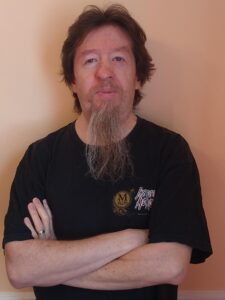
Gary Frank is a man of many talents. Hailing from the horror hotbed of New Jersey, he is not only a talented author but also a skilled songwriter and musician. Recently he burst back onto the literary scene with a gripping tale of terror, The Thing In The Woods. Want to know more? Keep reading….
1-Of all the classic literary conflicts, surely Man Vs. Bigfoot is one of the most primal. What inspired you to write about it?
We have the main character, Rich, who, like most of us, works 9-5 and has the usual adult responsibilities. He gets juxtaposed against Bigfoot who has none of these, a being that Rich sees as free to just live and survive in the wild. It’s appealing to him. The question I examine is who is the real monster in this story. Bigfoot’s just trying to survive, and here come these humans, messing things up.
 2-How has your writing evolved over the years from Forever Will You Suffer to The Thing In the Woods?
2-How has your writing evolved over the years from Forever Will You Suffer to The Thing In the Woods?
Forever Will You Suffer I refer to my B-Movie horror novel. It’s a roller coaster ride of craziness in a good way. With The Thing in the Woods, the relationships between the four characters and their story arc, takes precedence over the monster. My writing is less about the thing and more about the people having to overcome the thing.
3-What about living in New Jersey inspires you to write horror?
There’s a lot of weird that goes on in the Garden State, from the former Essex County Hospital, which was reported to be haunted, to the Pine Barrens and the Jersey Devil, to the ghosts in Cape May. It seems a prime place to set more weird stories, especially an urban legend like Bigfoot. There is a national organization that does Bigfoot research missions, and one of their locations is northern New Jersey.
 4-You are also a musician and songwriter. What’s the process for writing music like as opposed to writing fiction?
4-You are also a musician and songwriter. What’s the process for writing music like as opposed to writing fiction?
Writing songs and the accompanying music is more immediate. Lyrics kind of flow from one line to the next and there’s a poetic element there that seeks to rhyme. With stories, there isn’t that urgency. It’s more of a marathon than a sprint, which leaves me more space to unfold a story. Songs tend to be more like moments in time, like a photograph.
5-What would you do if you actually ran into a Bigfoot?
Fleeing in fear is high on the list, right after soiling myself. I’d like to think I’d be amazed and remember to take clear photographs. But I doubt I’d be so brave!
ECGC Talk Video Goes Live on YouTube
Earlier this year I was cajoled into giving a talk at East Coast Game Conference. I hadn’t given a talk at a game conference with a powerpoint in years – mostly I’ve been concentrating on narrative roundtables at GDC, as well as helping put together the content for the Game Narrative Summit and ECGC. But this time I went ahead and did it, talking about the differences between writing fiction and writing video games. Enjoy!
Five For Writing – Evan Skolnick
Evan Skolnick is the go-to writer when it comes to learning about writing for games. An established and talented writer himself, he also teaches a legendary tutorial at GDC and is a professor at the University of Silicon Valley. Plus, he’s written an exemplary book on game writing, Video Game Storytelling.A former comics writer for Marvel, Evan has seen it all, done it all, and written it all. Now, without further ado, Five for Writing with Evan Skolnick:
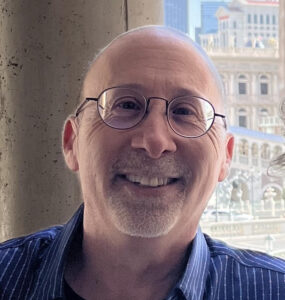 1-How did writing for comics inform your game writing?
1-How did writing for comics inform your game writing?
As most folks reading this probably well know, writing for games is a whole other animal vs. writing for more traditional media such as comics, movies, TV, novels, and so forth. Although I entered the game industry in 2001 as a producer, I almost immediately began contributing narrative content to many of the games in our studio.
And I had so much to learn about writing for this new (to me) medium! There really was no such thing as a dedicated “game writer” back then, and the term “narrative designer” was years off as well. There were no books or guides on the subject in those days. So, like many folks during that time, I was kind of on my own, figuring it
out as I went.
During this process, while I had a lot of new things to get my head around, there were some elements from my comics-writing background that did prove helpful. The first was that I noticed a significant crossover between super hero comics and video games in terms of the power fantasy aspect, and that both media forms often
included elements of science fiction or fantasy. The visual storytelling aspect of comics, including that age-old Hollywood maxim of “show don’t tell”, is quite applicable to many games. And squeezing a lot of story
into a small space — the art of being concise and economical with your storytelling — is definitely shared across the two media forms.
Finally, comics are a collaborative medium, and so that helped prepare me for the same aspect in games.
2-You teach game writing at the University of Silicon Valley and give an acclaimed storytelling tutorial at GDC. What’s the secret to teaching people game writing?
There are two separate audiences for these two examples, so I have two different
answers.
For GDC, it’s a one-day tutorial, and the audience members span all game development disciplines. So in that brief time I have with them, I focus on simply recognizing that game narrative is always a cross-discipline team effort, and try to give the developers in that room some basic storytelling knowledge to help them become better narrative collaborators, regardless of their role on the team.
At USV, though, the audience for our game writing and narrative design curriculum consists of aspiring game designers and writers, and it’s multiple semesters as opposed to just a single day. So it’s about giving these students capability and experience in as many real-world game writing and narrative design challenges as
they’re likely to face in the industry. I draw heavily upon my own 20+ years in game development to come up with these lessons, exercises, situations and challenges — for example, working in pre-established IPs, writing cutscenes, barks, and lore items, world-building, character development, choice design, voice recording support, collaborating with other team members, planning and scoping a game’s narrative elements, and so forth.
I’m not sure there’s a single “key” to teaching game writing, but the principle I probably emphasize the most is that game storytelling is an enhancement to gameplay, and should be working to elevate it, not elbow it out of the way or stomp all over it.
3-What does it feel like to have a game you’ve written (Cuphead) translated into a TV show?
Well, I didn’t create the world, characters or story structure for Cuphead, so I’m probably not as emotionally attached to this IP as one might expect from just looking at the credits. I came on late in the project, as we game writers often do, and so my job was to help the team — who already had a very clear vision of the game
they wanted to make — tell the story they wanted to tell.
It was a lot of fun, Studio MDHR was wonderful to work with, and I feel fortunate to be associated with what ended up being such a successful, high-profile game. But am I surprised that Netflix didn’t consult the game writer to participate in the animated show’s planning or write scripts? Absolutely not.
4-What advice do you have for aspiring game writers?
I get asked the “how do I become a game writer” question so often, a while back I wrote a blog piece providing my own answer. I think it still holds up!
 5-What says good game writing to you, and how do we get more of it?
5-What says good game writing to you, and how do we get more of it?
So many things are involved when it comes to good game writing, starting with itbeing good writing, period.
But that said, you can’t just hire any writer for this. If you take an award-winning writer from another medium and just drop them into a game project, they’re likely to struggle because there are so many unique aspects to game narrative development. It’s a bit like when F. Scott Fitzgerald tried to take his novel-writing skills to Hollywood toward the end of his career — just because he was a great novelist, it didn’t necessarily follow that he could adapt those skills to writing for the screen. It’s like that, but multiply the differences by a factor of five.
Unlike in more traditional media, where (in theory at least) “story is king”, game writing is generally a support role. This is a foreign concept to writers who are used to kicking off the creative process or simply handing off a script. Good game writing is expertly woven into the gameplay experience and enhances the player’s enjoyment. It adds powerful emotional stakes to what could otherwise feel like empty and repetitive gameplay experiences. When done right, it’s an intensively collaborative process across nearly the entire team.
So how do we get more of it?
Fortunately, it’s already happening. We’re getting more and more strong game writing, thanks to the increasingly accepted reality that having professional game writers and narrative designers involved and empowered throughout the process is the path to a better result.
Transgressive Science Fiction Kickstarter
 Some of you may recall that I had an essay in Ghost Show Press’ book on horror cinema. Well, the fine folks there are at it again, this time dealing with science fiction, and they’ve roped me into providing an essay on that most mind bending of 70s mindbenders, ZARDOZ. The Kickstarter for the project is live, so chip in and get ready to have your minds blown by a murderer’s row of contributors.
Some of you may recall that I had an essay in Ghost Show Press’ book on horror cinema. Well, the fine folks there are at it again, this time dealing with science fiction, and they’ve roped me into providing an essay on that most mind bending of 70s mindbenders, ZARDOZ. The Kickstarter for the project is live, so chip in and get ready to have your minds blown by a murderer’s row of contributors.
Five For Writing – Robert Ford
Robert Ford is cooler than you. That’s OK, he’s cooler than just about anybody, In addition to having written genre masterworks like The Compound and The Last Firefly of Summer, he’s collaborated with John Bodden on a series of novels and he’s widely known as a superb live reader. It was my great good fortune to get to hang out with him during the recent Scares That Care AuthorCon, and to get him to agree to sit down for five questions. So here they are, Five for Writing with Robert Ford.
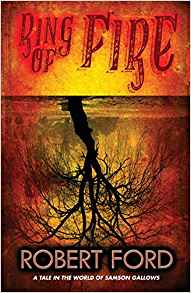 1-You’ve described your new book as “brutal”. Why go there?
1-You’ve described your new book as “brutal”. Why go there?
When I started writing Burner, I was on the verge of completing two projects and hadn’t decided what I was going to work on next. I sat down, flipped through my idea notebook, and came across several things I knew were novel-sized concepts. I wrote some notes down on each, but with Burner, the notes grew and grew until I’d written down about fifteen pages of material. It (no pun intended) ignited something and the next day, I became a man obsessed. I generally am not a very fast writer, but I wrote the first draft of Burner in a month. At times, it felt like I couldn’t possibly type fast enough to get the words down. The “brutal” part of the novel…it came with the territory of the novel’s content, and even so, I cut about twelve-thousand words from the draft because it felt “too extreme”, even though it was based on real case studies I read when I was doing research.
2-You’re renowned as one of the best readers in the business. What’s your secret?
I have been lucky enough to witness some of the best readers when I was first starting out, and not long after, witnessed some readings that were quite the opposite. I suppose I paid attention to the good and bad and began applying that to my own readings. And practice. Practice, practice, practice. Listen to your voice and how it projects, the cadence and rhythm of words. Plus, it helps to love doing live readings, and I always have.
3-You’ve notably collaborated with John Boden on Cattywampus. What’s your process for 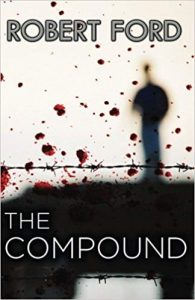 collaboration, and is it easier or tougher than writing solo?
collaboration, and is it easier or tougher than writing solo?
Yeah, John and I worked together on Rattlesnake Kisses, Cattywampus, and are finishing up Black Salve. For us, we start with a general core of an idea, and then dive right in. We don’t outline and though we occasionally touch base on the storyline to maintain overall direction, we pretty much throw a chapter or two at each other, and then take turns. It’s an absolute blast and sometimes we’ll throw each other challenges, but it’s all in good fun. I can’t say it’s tougher or easier than working solo, but we’re both having a great time doing it.
4-You mention on your web page that your stories can make readers cry.
Do you prefer that or horrifying them? I used to run my own advertising agency for years, and when I was developing campaigns, one of the things I always focused on is making sure I hit an emotional nerve or it falls flat. I feel that way with my written work as well. So pulling their heart strings, and scaring the hell out of them right after makes a good pairing for me. I also think humor and horror are great mates as well.
5-What’s your favorite book that you’ve written, and why?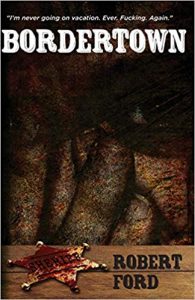
I’m very proud of Burner, because it is such a very different novel for me and seems to be resonating with readers in such a great way. I have a supernatural novel out on submission called Dead Pennies that I think is going to shake readers up and make them sleep with the lights on. But my favorite is the one I’m working on now, titled Domino. It’s early, but this “feels” big, and I’m forcing myself to slow down so I can do the story justice. Everyone will be hearing a lot more about that soon.
